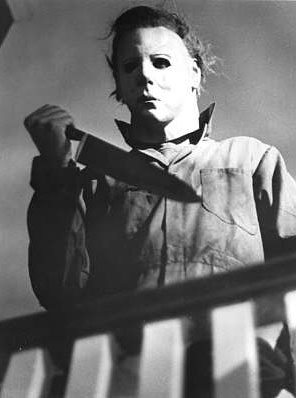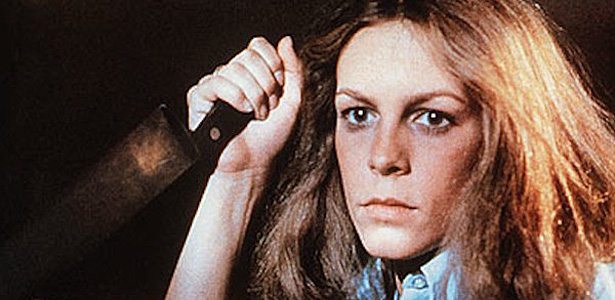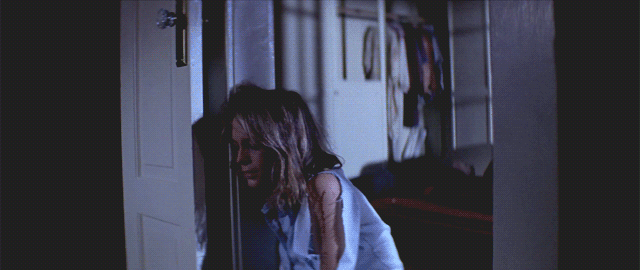The Boogeyman Turns 35: Halloween
There’s a time and a place in which to watch John Carpenter’s 1978 magnum opus, Halloween, and arguably, that time and place is not the late afternoon bustle which framed last Thursday’s screening at the Curiositea Cinema Club. But it is a testament to Halloween and it’s legacy that with its eerie 5/4 piano score, 70s haircuts, and pumpkins atop every suburban verandah, it can’t help but fill even the most inattentive of rooms with its own special brand of ambience.
Frequently name-checked as one of the scariest film of all time and a seminal moment in the popularisation of the slasher genre, it’s amazing to think that Halloween was shot on a shoestring budget of just over $300,000. Even more amazing that Michael Myers’ infamous white mask, which sent tremors down the spines of a generation, amounted to a spray-painted Captain Kirk likeness – the cheapest Carpenter’s team could find in the costume store. In the history of horror, much can be traced back to Halloween – it was a forerunner of many slasher franchises such as Nightmare on Elm Street, Friday the 13th, and much later Scream. Jamie Lee Curtis’ performance saw the increased use of the ‘final girl’ trope and many of the genre’s clichés including hedonistic and promiscuous teen victims were pioneered in the film.
 Like Psycho, which some might credit as the ‘proto-slasher’ film, it is often easy to question whether Halloween still retains the power to really scare or shock in today’s age. When compared to the desensitising special effects of contemporary horror, the Hitchcockian downward plunges of a young Michael Myers’s knife coupled with Carpenter’s dramatic orchestral surges fail to really deliver the kind of nightmare-inducing, fear-of-the-dark-inspiring reactions we might derive today from Paranormal Activity or Saw.
Like Psycho, which some might credit as the ‘proto-slasher’ film, it is often easy to question whether Halloween still retains the power to really scare or shock in today’s age. When compared to the desensitising special effects of contemporary horror, the Hitchcockian downward plunges of a young Michael Myers’s knife coupled with Carpenter’s dramatic orchestral surges fail to really deliver the kind of nightmare-inducing, fear-of-the-dark-inspiring reactions we might derive today from Paranormal Activity or Saw.
That’s because the horror in Halloween is not to be found in the intimate gore and gristle that would characterise the later slasher/splatter films. Nor does the horror reside in the hyped up, demonic incarnations that lurch onto the cinema screen time and time again to jangle our nerves and jolt our stomachs. The true horror of Halloween is in its simplicity: the oppressive darkness of every shot, the protracted build up to the act of murder, the rasp of Michael’s guttural respiration as it synchronises with your own, and most importantly, the alarming permeability of the suburban home. With his grotesquely inhuman face, vendetta against Haddonfield’s neglectful babysitters and invulnerability to bullets, knives and knitting needles, Michael Myers has barely any backstory or justification, but is “purely, and simply, evil”. Whether he’s lurking behind hedgerows and washing lines or circling the perimeters of the laundry room, the inhuman and irrepressible serial killer brings evil over the threshold of American suburbia. As little Tommy Doyle rightly remarks, “You can’t kill the Boogeyman”.
So whether you view Halloween as an empowering tale of female resourcefulness or a puritanical parable for a licentious youth, there are many reasons why it is the perfect film for its namesake holiday. An abundance of jack-o’-lanterns and a relatively predictable plot imbue the film with enough kitsch and festivity to befit the Halloween season. The stark image of Michael’s looming white mask amidst the leafy suburbs will provide ample matter to stir our critical ruminations as we celebrate the season of the uncanny. For a film so emblematic of our generic understanding of ‘horror’, watching Halloween in the cold light of the 21st century can be an unexpectedly refreshing way to while away the time.


Comments